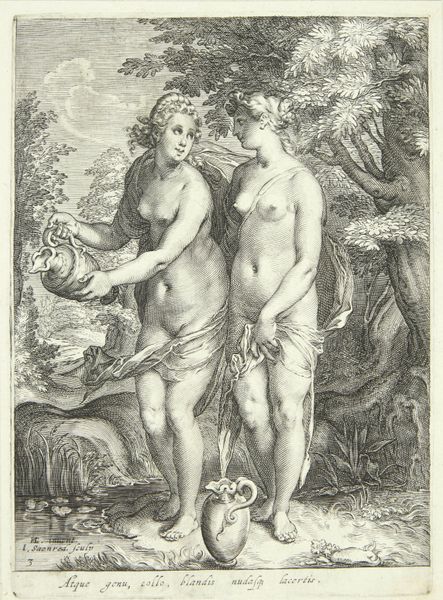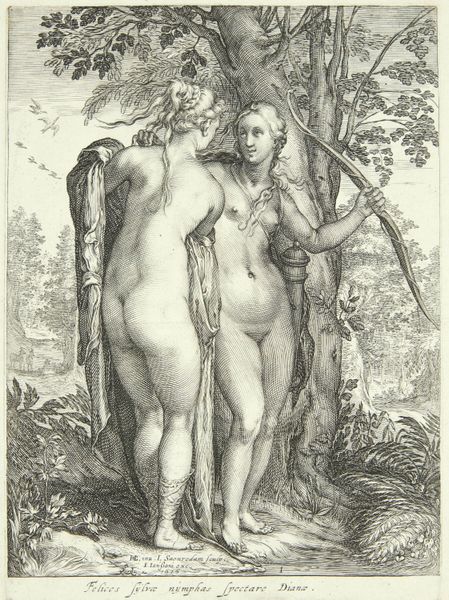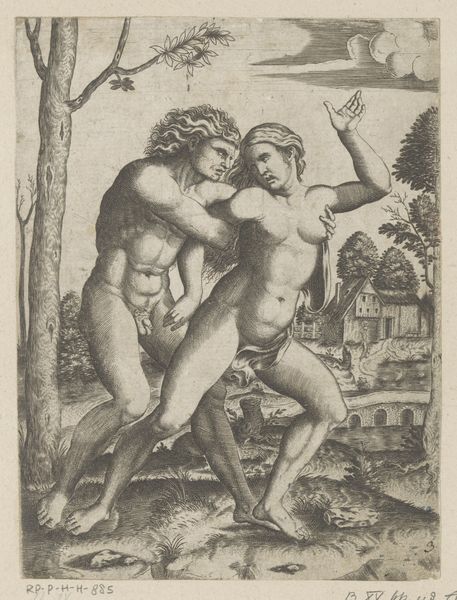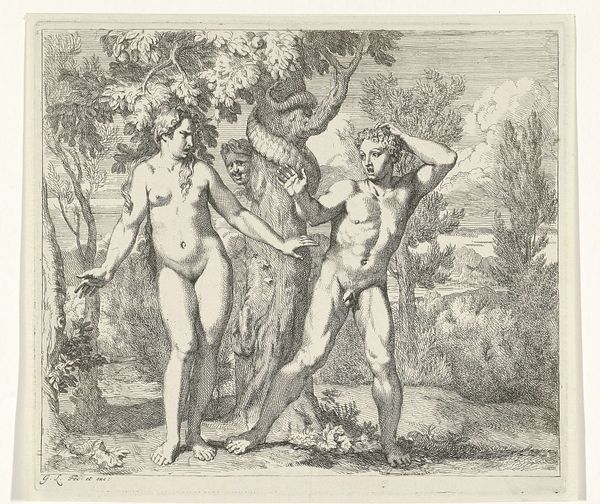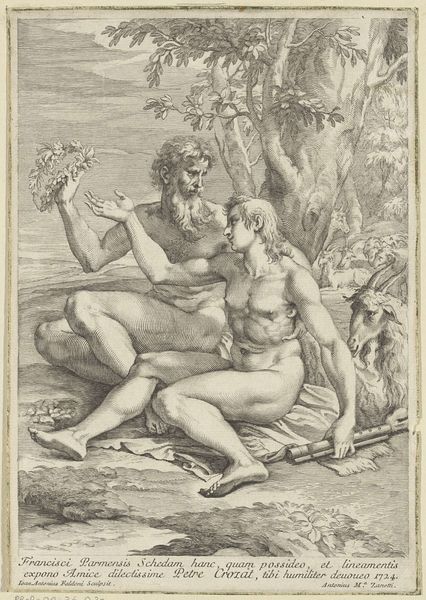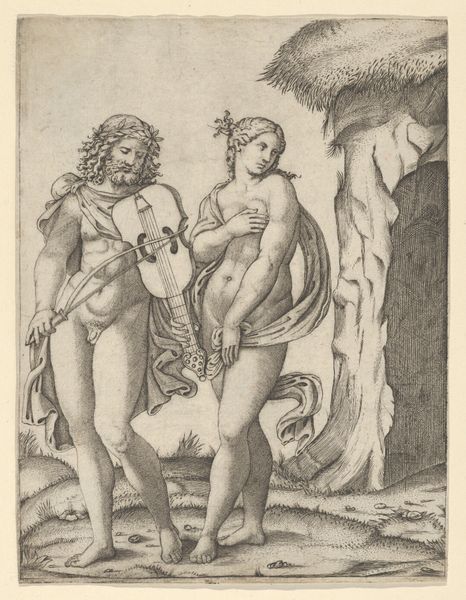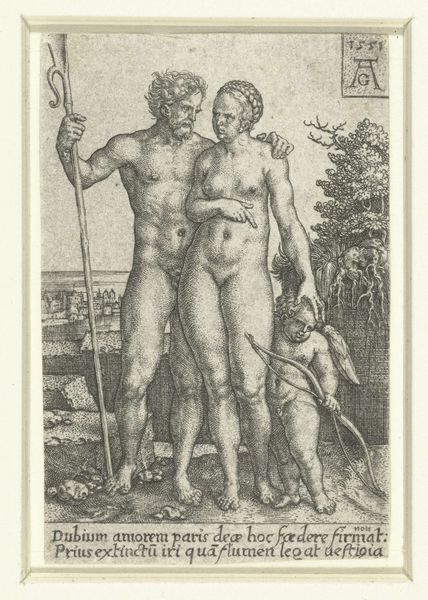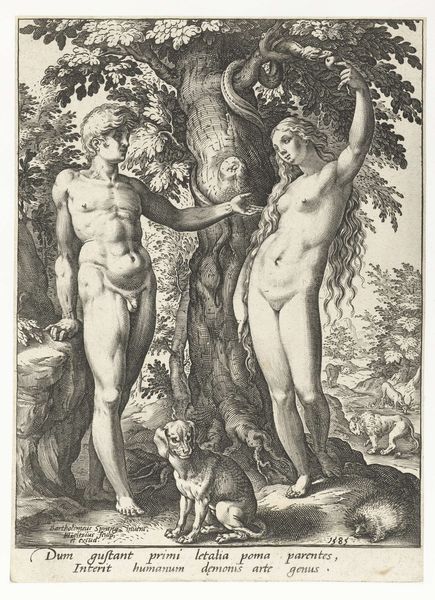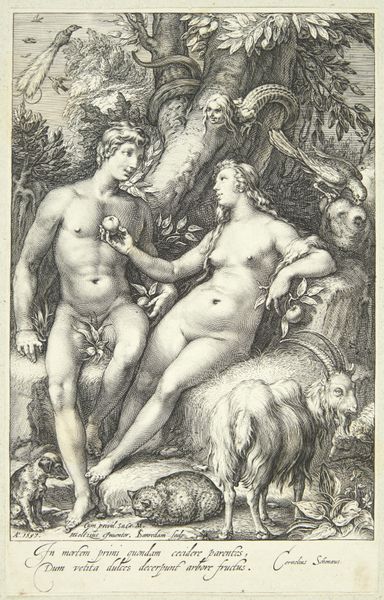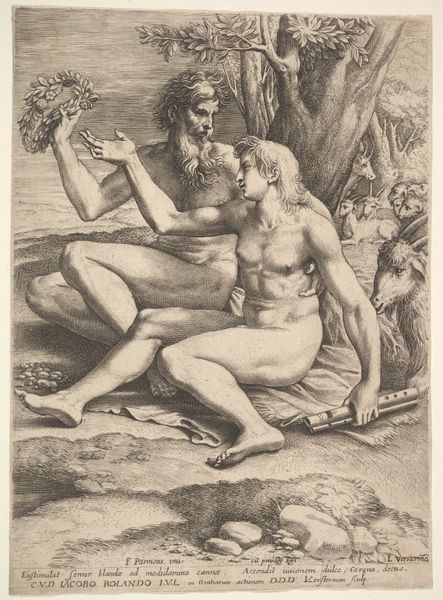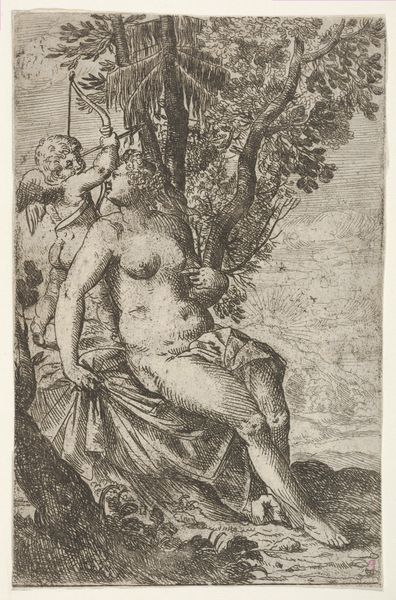
print, engraving
#
allegory
# print
#
landscape
#
figuration
#
11_renaissance
#
northern-renaissance
#
nude
#
engraving
Dimensions: 218 mm (height) x 159 mm (width) (plademaal)
Curator: Jan Saenredam crafted this engraving, "Two Nymphs of Diana with Pitchers," back in 1616. What strikes you most about it? Editor: Initially, it feels so... classical, almost idyllic. There’s a soft serenity in the poses of the nymphs that invites a sense of peace. Curator: It's worth noting the engraving technique itself. Saenredam's skill with the burin is exceptional. See how he modulates the lines to create volume and texture, almost mimicking the nuances of paint with a purely linear process. And consider the sheer labor involved in such meticulous work! Editor: Absolutely. But that serenity is layered. Who are these nymphs, really? Is this merely an exercise in aestheticizing the female form, or can we excavate deeper narratives about women and their relationship to nature and power during the Renaissance? Curator: Renaissance art often repurposed classical iconography, lending it new symbolic weight. The paper it is printed on is also a consideration. Where was it sourced? Who was able to afford such a piece? These factors shape the consumption and meaning-making surrounding the artwork. Editor: The positioning of these nymphs in a watery landscape prompts so many questions about female sexuality and autonomy. Their semi-nudity is obviously loaded. Whose gaze are they intended for, and what power dynamics are at play? Curator: I think acknowledging those power structures, but also appreciating Saenredam's artistry is essential. His mastery over line, his translation of three-dimensional forms onto a two-dimensional plane – that's a testament to craft. Editor: Precisely. It allows us to connect the artistic choices with broader sociocultural contexts, challenging and expanding our understanding of Renaissance art as actively engaged with gender, power, and representation. Curator: It’s the tension between the intended beauty and its complicated socio-historical setting that keeps the piece so compelling. Editor: Exactly, we see a testament to Renaissance artistry but also how that artistry can both reflect and subtly shape perceptions around gender and class.
Comments
No comments
Be the first to comment and join the conversation on the ultimate creative platform.
